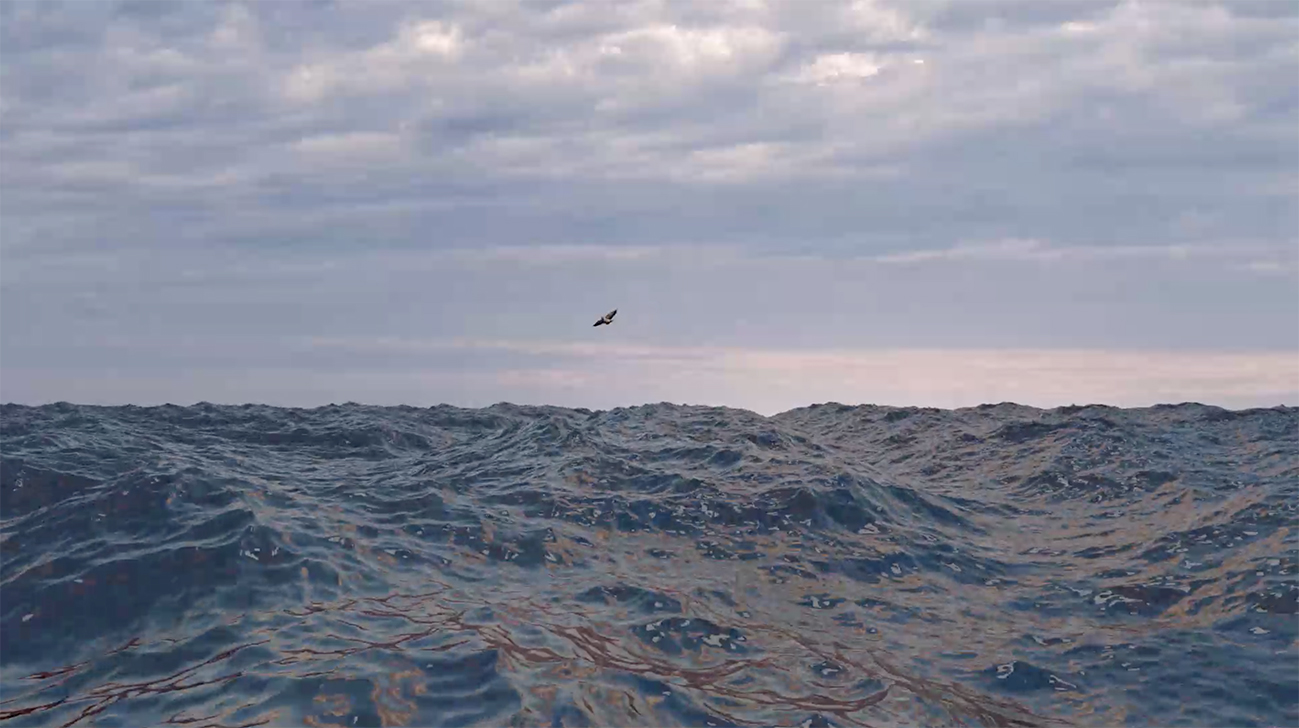Foley creates a landscape devoid of both organic material and human creation; challenging and subverting the idea of foley as ‘craft’
Lydia Earthy
‘The object is always taken to be more clever, more cynical, more ingenious than the subject, which it awaits at every turn. The metamorphoses, tactics, and strategies of the object exceeds the subject’s understanding…. it has its own strategy.’
— Jean Baudrillard, Fatal Strategies (1983)
What is the difference between a car chase in a popular film franchise and a hot water bottle being dragged across damp kitchen tiles? While physically, there may be many distinctions, the difference becomes negligible if you are listening, not watching.
Foley, as a genre, was forced into existence in 1920s Hollywood. At the beginning of the twentieth century, silent movie was the predominant medium of choice for film. When Warner Bros produced the Jazz Singer (1927) – the first film to have an accompanying soundtrack – Universal Pictures had to quickly rethink the release of their silent musical, Show Boat (1927). In order to remain competitive, Jack Donovan Foley, Foley’s eponymous creator, used technology previously reserved for the realm of radio play to retroactively record a soundtrack. To this day, foley techniques remain largely unchanged; sounds are recorded in post-production by a Foley artist in their studio, while the final cut of the film is played, often using bizarre and unexpected household items to create the sound track for a film.
Foley, unlike other forms of representation, is unique in that it allows us to reconsider our understanding of mimesis. Instead of imitating sound verbatim, Foley artists use a number of well known – and strange – tools to make recognisable sounds. Some examples include: cellophane to make a crackling fire; frozen romaine lettuce to imitate head injuries; a pair of gloves to imitate bird wings flapping. Indeed, ‘a successful sound effect efficiently and effectively refers to an ideal notion of a sound or soundscape rather than an assiduous attempt at authenticity.’ In this sense, foley, as a genre, is distinctly postmodern: it delights in the disjunct between reality and representation. As such, Foley art problematises enlightenment representational strategies which position art as derivative and primarily engaged in the production of direct representation.
Pequeno’s piece usefully engages with contemporary art theory on the ‘hyperreal’; a mode where technology creates agents which are more real – even more desirable – than reality. Foley creates a landscape devoid of both organic material and human creation; challenging and subverting the idea of foley as ‘craft’. Pequeno further subverts the genre by emphasising the materiality of his technology as spatially, the piece is laid out in a way that emphasises the disjunct between process and result. The components of the piece are ‘ecstatic’, operating under their own mysterious agency, and in turn, asking the viewer to reconsider the place of the human in the technological scene before us.
In Simulacra and Simulation, postmodernist scholar Jean Baudrillard outlines what he sees as the postmodern condition: a worldview in which reality has been so inverted, that the first order of reality is the images we see online, which he refers to as ‘simulations’. He refers to this as ‘the desert of the real’. Here, simulacra are so distanced from their original referents, the simulations become empty shells, or ‘ecstatic objects’, which ‘outwit the viewer’ at every turn. Baudrillard’s theories are often used in reference to the entertainment industry, advertisements, and images disseminated on the internet. However, they are useful here, as they outline the disjunct between artificial sounds, heard in films or other animations, and real sounds, heard in reality. Often, the direction of representation between the two are confused.

/ˈfəʊli/, 2019
Pequeno’s piece acts as a dispassionate Rube Goldberg machine, emphasising this physical (and psychological) gap between reality and its technological rendering. Upon descending into the downstairs gallery space, viewers are faced with ten, large, latex balloons, each of which encloses a microphone. The balloons are latex, milky and transparent, and seem embryonic. Agitated by a fan, the balloons bounce off one another, their reverberations picked up by their microphones, and fed through a distortion system. The resulting sound is unmistakably a stormy seascape, and accompanies an animated video of the ocean, Ocean Scene Composite (2020), in the adjoining space. The piece is semiotically charged – where is the original referent? Before the viewer, technology possesses an insidious agency which threatens and overwhelms the subject.
While Foley is normally considered an ‘invisible art’, like ‘ventriloquism’, or ‘magic’ as described by Mark Lewis, Pequeno’s piece capitalises on the theatricality of sound production, prefacing the materiality of technology through his presentation of detailed wiring and technical hardware, and emphasising the absurdity of sound production with his oversized balloons hanging at the centre of the room. This bizarre composition is further emphasised by the Giclee print, and the act of appearing (2020), which casts a typical foley technique – leather gloves as flapping bird wings – in lurid green. Here, Pequeno subverts the genre by making visible labour which would normally be invisible
Machine art has always exerted a particular fascination over modernist artists like Duchamp and Picabia. In the early twentieth century, the Futurists admired the sublime power of locomotives and factory production lines alike. Today, however, technology has transmogrified to possess agencies which not only mutate and outgrow human capacity, but also define our understanding of the world. As Hito Steyerl argues in her essay Too much world: is the internet dead?, techniques of post production – editing, copying, distorting – have become essential to our understanding of how the world functions. She points to a reorganisation of representational hierarchies, a world in which post-production is no longer derivative, but a formative part of the human experience. In the same way, Pequeno’s systematic ocean production software calls into question not only the hierarchies of representation in both art and the military-industrial-entertainment complex more broadly, but also our position as viewing subjects.
(By Lydia Earthy)
